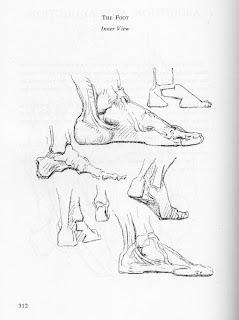Week 1: Assignment 1: Hands
Week 2: Assignment 2: Human Skull
Week 3: Assignment 3: The Foot
Week 4: No assignment: Homework: Two contour drawings at home.
Week 5: Assignment 4: The human skeleton
Week 6: Assignment 5: Muscle Group
Week 7: Assignment 6: Three layer Limb
Week 8: No assignment
Week 9: Assignment 7a: Muscle Progression or 7b: Drawing from Life
Week 10: Assignment 8: Faces
Week 11: Final Project Due Week 12
Week 12: Hand in Final Project
Some great reference images for drawing hands: Taken From Bridgman's Complete Guide to Life Drawing:


































